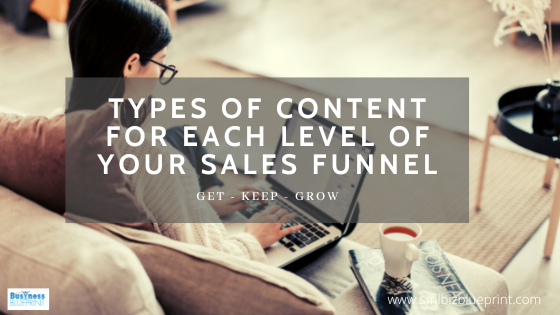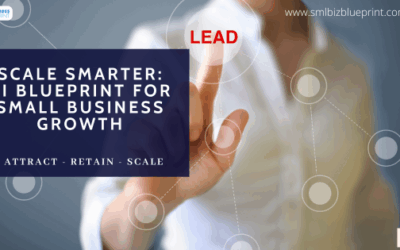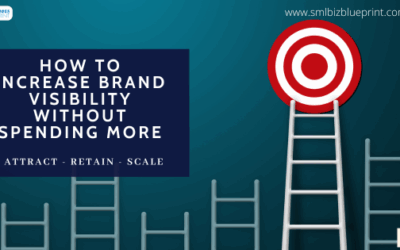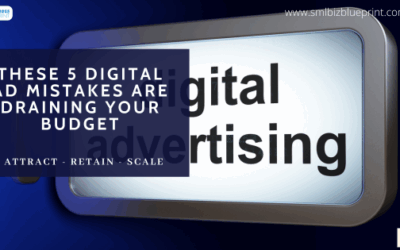Most of us go through a path or journey before we purchase a product. This generally includes some research and evaluation before we commit to a purchase. This is commonly referred to as the buyer’s journey.
Depending on the product and dollar value of the purchase this path could be a lengthy process before a purchase occurs.
Because consumers are more informed and more empowered than ever before, it’s important to deeply understand your customer’s journey so you can create content that helps them along that path while positioning you as an authority in your space.

The normal process is:
- Awareness – the customer is aware of a problem they want to solve and starts looking for solutions
- Engagement – the customer researches the various solutions or products that will solve their problem
- Conversion – the customer purchases the service or product
There are 5 Stages of Customer Awareness (a concept developed by Eugene Schwartz)
- Unaware – not aware they have a problem
- Problem Aware – the customer knows they have a problem they want to solve but don’t know the solutions
- Solution Aware – the customer knows the results they want but not your product
- Product Aware – the customer is aware of different products that can solve their problem
- Most Aware – the customer knows the product and needs to know the deal
It is important that you learn and understand what people are looking for in every stage of the buyer’s journey, and their different levels of awareness so that you produce content that attracts their interest and fuels your marketing and sales funnel strategy.
Understanding these 5 stages will also help you tailor your sales copy and messages to the different types of awareness.
Why the Buyer’s Journey Matters
When your content doesn’t address each of these stages, you’ll lose out on customers either because they dropped off towards the end of the funnel or because they never found out about your product in the first place.
For example, if you run an email marketing tool brand and don’t post any awareness stage content, your competitors who have good early-stage content will take customers away from you.
If you have solid awareness stage content but don’t provide any case studies or product comparison guides, you’re going to hand over the business to other providers that can make a more compelling argument to buyers in the consideration stage.
An effective content marketing strategy will gracefully guide a buyer straight from the awareness stage to the decision stage without any gaps. If it doesn’t, then you need to rethink your strategy.
How Does the Consumer View Your Brand at Each Stage of the Purchase?
Although the exact response of each consumer cannot be predicted with complete accuracy, there are ways to predict the general behaviour shifts of various customer segments, as they move forward – and deeper – into the sales funnel.
Take, for example, the case of someone looking to buy a computer. If the customer is not loyal to any brand, in particular, they won’t be inclined to choose a certain model or brand simply because it is popular in the market. Instead, they may well view each computer brand equally, and conduct a comprehensive online search for the pros and cons of each computer in their budget range.

So the customer follows the journey of “Awareness”, followed by “Engagement” and finally “Purchase”. Let’s go through them one by one:
How to Create Content for Each Stage of the Buyer’s Journey
Now that you have a clear idea of what the buyer’s journey entails, here are some actionable steps you can take to ensure your content hits all the right spots.
Top of the Funnel: Awareness
At this, the widest part of the funnel, you’re seeking to create brand awareness and maybe some indirect customer acquisition through educational content. If your use isn’t intuitively and immediately obvious, you educate the market on problems they may have lurking that they may not even have considered yet.
The aim of this stage is to raise brand awareness among consumers who may not yet have formed any solid opinions about their preferred product.
When starting with unqualified prospects who may know nothing about your brand or product, the best content is as clean and uncluttered as possible. Be compelling but with few words. You have to catch their attention with riveting content. Make sure you’re using simple landing pages and short intro videos as well as eye-catching infographics.
Research what your audience wants and needs to learn about. Then, teach them those things.
This way they associate feelings of appreciation and respect with your brand, as well as authority. While this is happening, you are also raising the competence of your readers in understanding how useful your products and services could be to them.
Since it’s so early in the buyer’s journey, the chances of conversion are quite low. By creating content that resonates with them now, you can potentially make your brand jump to the top of the list of favourites.
By understanding the pain points of your customers and addressing them, you can increase your chances of engaging them with what you have to offer.
But you are not selling at this point, you’re providing information and using your content to generate interest. The goal is to make them curious enough to remember your name and integrate it into their list of trusted brands.
Content types that work well in the awareness phase include:
Blog posts and articles: Writing informative blog posts and articles is a great way to show your audience that you know what you’re talking about – that you’re an authority in the niche. With the right content writing services, you can establish rapport and come off as a credible source without worrying about grammatical or structural errors tarnishing your reputation.
E-books: E-books are another way of providing your buyers with relevant information for a specific niche, problem or challenge. In some cases, you might provide an e-book as gated content, meaning the user must enter their email address to access the download. By doing so, you’ll have another route to communicate with them and nurture the lead in the future.
Landing pages: While landing pages are a great fit for all stages of the buyer’s journey, the type of content that populates your landing page needs to be simple and straightforward. Make sure that the language you use is not very demanding at the Awareness stage.
Videos: Educational videos like how-tos are a great way to keep your audience interested without being too promotional. Since most people at this stage may not even know which product or service can help solve their problem or challenge, educational videos can help you tap into the right segment by providing your audience with the answers they need.
Social media: Share information related to the pains or general questions buyers are asking. Don’t forget: with B2B, different social channels have greater benefits than others. LinkedIn groups can be very powerful locations for your target buyers to look for trusted information.
Downloadable content: Infographics, checklists, quick guides, videos, testimonials and interactive content are great assets to answer the key questions buyers have. They’re also easy to find, consume, and share.
Social Ads and PPC can be good ways to increase reach and awareness faster—but to maximize your ad spend, make sure you have some lead capture points set up on your site. You don’t want to just spend money on impressions and site visitors without getting more data.
Once the customer has already conducted initial research and knows which brands suit their needs, they enter into what’s known as the “Engagement” stage.

Middle of the Funnel: Engagement/Evaluation
At this stage of the funnel, the potential consumer starts to connect you with the solution you offer. They are evaluating who/what can best answer their questions and fulfil their needs. Your goal is to formulate content that will convert them to a customer who buys something from you.
You want to supply the content that allows them to evaluate you and your products. You’re speaking directly to people you believe your business can help and making sure they know how you can help them. You’re still not wearing your sales hat because they’re still developing the requisite trust.
You should focus on creating comprehensive, to-the-point and impactful content that compels customers to take action.
The consumer is researching and weighing the options to see which offers the most value. At this point in the journey, the thought processes of your buyers are a lot more focused and centred on specifics.
This is when you’ll need to start explaining how you can provide a solution.
It’s really important to provide content that is honest, accurate, authentic and value-adding. You don’t want to set up a future scenario where your buyer is disappointed by overreaching claims or promises.
If your buyer has made it this far, they are clearly looking for more information than what they can find in a simple Google search. Dive into more detail and centre your content on the problem or challenge at hand. This is the surest way to add value and get results.
Make sure you make it easy for them to browse all the information that can differentiate you from your competitors.
Content types that work well in the consideration/evaluation phase include:
Targeted email campaigns: A good automated drip campaign can help educate your buyer and help trigger actions, rather than waiting around for them to come back and engage.
Case studies: Case studies are a surefire way of highlighting what your product or service has already achieved for past and existing customers, and how it can offer solutions to potential customers. By using statistics, insights, and examples to back your claims, you can improve your chances of nurturing the lead to the final stage.
Explainer videos: Explainer videos are a great way to get your audience hooked to your product or service. Focusing your explainer videos on the pain points of the customer can help you get the results you’re looking for.
White papers: The best part about white papers is how a single challenge or problem is comprehensively explained to provide the reader with a viable solution. By creating white papers focused on what’s troubling your audience, you can grab their interest all while establishing your brand as an authority.
Podcasts and webinars: Constantly increasing in popularity, podcasts and webinars are a great way to engage your audience by providing them with answers in an accessible audio/visual format that can be far more engaging than written content.
Newsletters: A good newsletter can help educate your buyer and help trigger actions, rather than waiting around for them to come back and engage.
How-to content: Showcasing your product’s features and comparing to competitors including videos and customer reviews.
Product specification sheets: This content involves things like clear product descriptions that outline the unique value they provide to customers. That way, prospects can see you as an expert in your field. You could include comparison charts between your various products or with your competitors’ offerings.

Bottom of the Funnel: Conversion/Purchase
The leads still in your funnel have now seen your landing pages, found your social media accounts, enjoyed your videos, and looked over the compelling and well-designed infographics you’ve presented. They’re ready for more.
They believe your product or service might be useful to them, and now they want to know they can trust the brand. You build that trust by establishing expertise as a helpful thought leader.
You offer free advice by regularly updating content channels on social platforms where your target audience hangs out and you include a free trial of your product or service.
The Purchase stage of the buyer’s journey is characterized by scrutiny. While your buyer is probably excited about making a purchase, it will still take a whole lot of convincing to get that final click. At the same time, it’s important to understand that your buyer has other options available, and they may well still be ready to hear the one excuse not to choose your brand, product or service.
While the primary motive behind Purchase-stage content is driving conversions, it’s crucial to solve all the problems and answer all the questions and concerns of your prospects now, to ensure they have no reservations when it comes to making the decision.
By building on the relationship that you started creating at the Consideration stage, you can influence the decision of your buyer in favour of your product or service, ultimately convincing them to finally make the purchase. During this stage, you also need to provide a great user experience and solid customer support to close the deal.
Now is when you show them that buying from you is the smart thing to do. This requires more qualifying information. This is the time for long-form, in-depth content like:
Case studies: Case studies are a surefire way of highlighting what your product or service has already achieved for past and existing customers, and how it can offer solutions to potential customers. By using statistics, insights, and examples to back your claims, you can improve your chances of nurturing the lead to the final stage.
Free trials: Offer free trials so that customers can try your product without any obligation
Offers: Have special offers for customers to purchase your product.
Product literature: This content involves things like clear product descriptions that outline the unique value they provide to customers. That way, prospects can see you as an expert in your field. You could include comparison charts between your various products or with your competitors’ offerings.
E-Books: E-books are another way of providing your buyers with relevant information for a specific niche, problem or challenge. In some cases, you might provide an e-book as gated content, meaning the user must enter their email address to access the download. By doing so, you’ll have another route to communicate with them and nurture the lead in the future.
Webinars: Webinars are a great way to engage your audience by providing them with answers in an accessible audio/visual format that can be far more engaging than written content.

Drive Loyalty with Content Marketing
Modern content marketing funnels often include a fourth stage – loyalty. The idea is that you shouldn’t abandon a customer right after they make their first purchase. You need to handhold them as they start using your product.
As with the other stages of the funnel, high-quality content plays a key role here. You can use personalized emails, educational blog posts, and surveys to delight your customers. You need to provide them with detailed user guides and round-the-clock support to create an outstanding customer experience.
This is particularly crucial considering that acquiring a new customer costs up to 7 times more than retaining an existing one. When you make your customers feel valued, it reinforces their trust and loyalty.
This, in turn, converts them into staunch advocates of your brand. Advocates end up recommending your product/service to more people and consequently, you attract more consumers to the top of the funnel.
Now that you know the importance of content marketing at every stage of the funnel, you can’t wait to get started.
Other Reading
https://blog.hubspot.com/marketing/content-for-every-funnel-stage
https://ahrefs.com/blog/buyers-journey/




